Observatories, Mercury & Venus, ISS, Jupiter, Saturn
Posted: 20 September 2019
|
Open: Thursday, 19 September 2019, 1805 MST Temperature: 93°F |
Session: 1383 Conditions: Mostly clear, breezy |
Equipment Used:
12" f/8 LX600 w/StarLock
2" 24mm UWA eyepiece
1.25" 3X TeleXtender
Atmospheric Dispersion Corrector
2" 50mm eyepiece
Focal Reducer
Camera:
D850 DSLR
1812 MST: LX600 ON, StarLock OFF, High Precision OFF.
Updated the TLE for this night's excellent pass of the International Space Station (ISS).
Viewed the planet Jupiter, 102X.
I then went to the house patio to try to view the planets Mercury and Venus low in the western sky after sunset.
1825 MST: I took the following D850 DSLR focal length 300mm photograph of Cassiopeia Observatory with Kitt Peak National Observatory in the distance (top right):
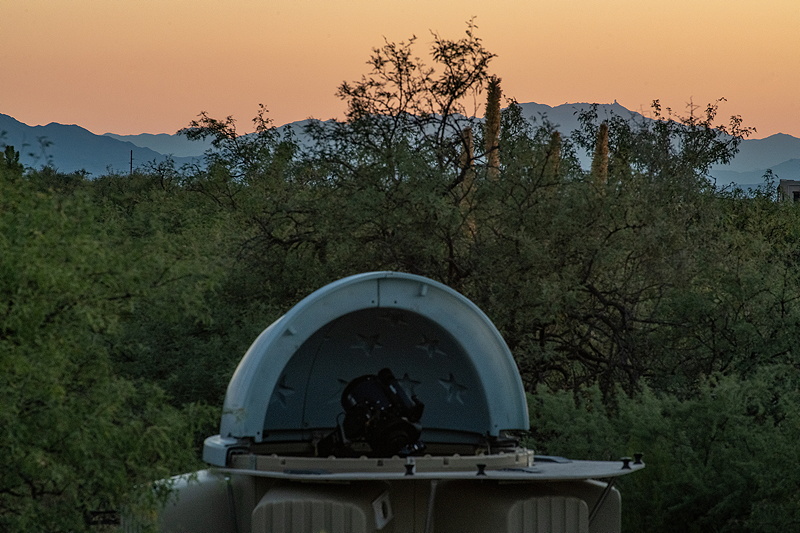
This is a crop of the above photo showing some of the observatories at Kitt Peak:

1827 MST: sunset.
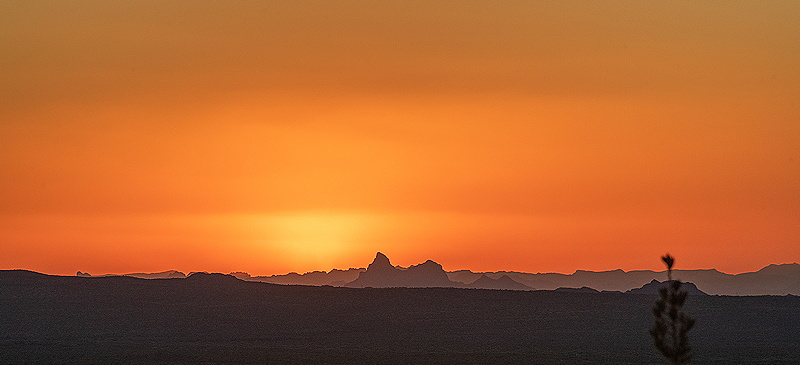
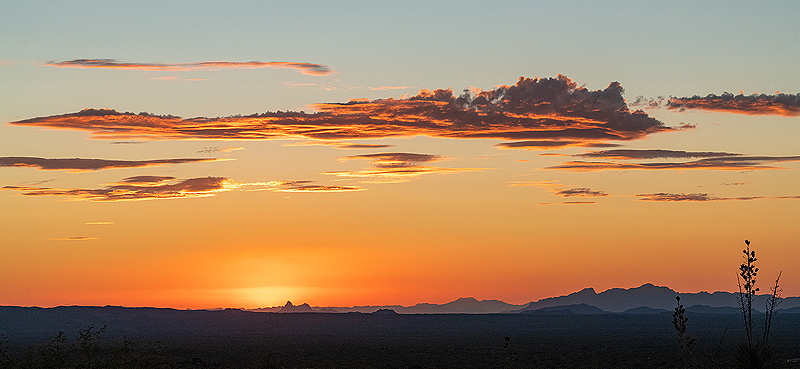
1830 MST: I spotted Venus using 12x50 binoculars. 1843 MST: Venus was now visible to the naked eye if you knew where to look. 1850 MST: saw Mercury using the 12x50 binoculars. 1854 MST: took this D850 (cropped photo) of Mercury and Venus very low in the western sky, f/5.6, 1/60sec, ISO 1250, FL 300mm:
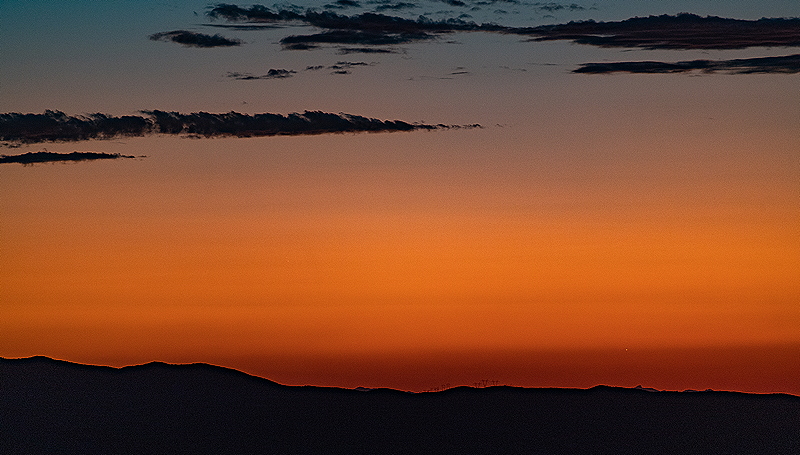
Mouseover or tap on image for labels
Venus is at the lower right. Can you see Mercury just to the left of center? If not, mouseover or tap on the image for pointers to the planets.
1858 MST: returned to the observatory and began preparing for the ISS pass (start at 1915 MST). Mounted the D850 DSLR at prime focus of the 12" telescope, focused on Jupiter, and locked the primary mirror. 1908 MST: all was ready for the pass. The ISS would rise behind a tree. I did a video recording (2160p, 30fps, 1/2000sec, ISO 1600) of the ISS. Tracking was good until shortly after mid-pass when it got more erratic as the ISS approached the North Celestial Pole (a typical occurrence near the NCP). The following images of the ISS from three video frames show the structure including the solar panels:

1924 MST: the breezes had calmed down somewhat so I decided to try some planetary imaging. Mounted the D850 DSLR at prime focus + 3X TeleXtender + the Atmospheric Dispersion Corrector (ADC). I did video recordings at 1080p, 24fps, 5X slo-mo with exposures of 1/200sec, ISO 2500 for Jupiter and 1/125sec, ISO 6400 for Saturn.
Jupiter (stack of 2425 frames)
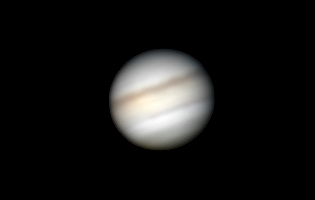
Saturn (stack of 2280 frames)
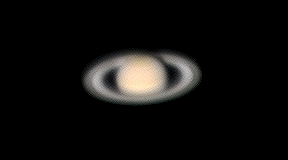
1959 MST: removed the camera, 3X TeleXtender, and ADC. Viewed Saturn, 102X. Four moons were visible.
2004 MST: Dome OFF (onto PZT).
Mounted the D850 DSLR at prime focus + focal reducer. Attempted to take an image of Quasar CTA 102 but seeing was not good enough for StarLock autoguiding. The stars in the image all looked like Saturn. Will try again on a future session.
2030 MST: removed the camera. There were still some breezes blowing. Decided to do some visual observing.
Viewed M15 (globular cluster), 102X.
2043 MST: Dome ON.
Viewed M13 (Great Globular Cluster in Hercules) and M92 (globular cluster), 102X.
Then viewed M8 (Lagoon Nebula), M20 (Trifid Nebula), M16 (Eagle Nebula), M17 (Swan Nebula), and M22 (globular cluster), 102X. Switched to 49X and viewed the galaxies (M110), M31 (Andromeda Galaxy), M32, and M33 (Triangulum Galaxy). Viewed the Double Cluster (open star clusters), 49X and 102X.
It was nice to do some visual observing of several Deep Sky Objects again. Had not done that in a long while.
2105 MST: LX600 OFF.
|
Close: Thursday, 19 September 2019, 2116 MST Temperature: 74°F |
Session Length: 3h 11m Conditions: Mostly clear, breezy |
Comments are welcome using Email. Twitter users can use the button below to tweet this report to their followers. Thanks.
Cassiopeia Observatory Home Page
Copyright ©2019 Michael L. Weasner / mweasner@me.com
URL = http://www.weasner.com/co/Reports/2019/09/20/index.html
